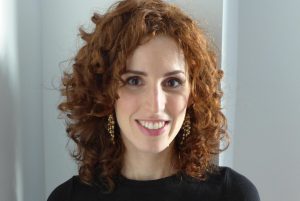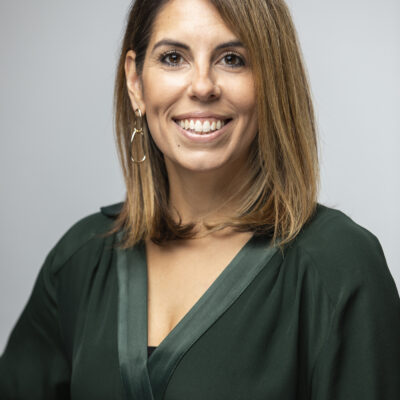
As market forces fail local news, our media ecosystem are failing the communities that they have been entrusted to serve. Philanthropy, for its part, has come to the table, providing critical support for nonprofit news in innovative and unprecedented ways. Today, a new initiative announces it plan to reinvigorate local news on a large scale.
The American Journalism Project’s mission is grounded in its understanding of the severity, urgency, and scope of the crisis at hand. Today it launched a major new effort to reinvigorate local news, announcing $42 million in founding commitments. The new venture philanthropy fund, which also announced its first three hires and its board of directors, will provide transformative grants and executive-level support to local, nonprofit civic news organizations across the U.S.
Founded by Elizabeth Green and John Thornton (founders of Chalkbeat and The Texas Tribune, respectively) the American Journalism Project will bring new resources to local journalism. In the face of a steep and growing crisis in local news, civic news organizations are an emerging model for sustaining local newsgathering and meeting the information needs of local communities, one ripe with potential and talent in need of greater support.
Earlier this month, the John S. and James L. Knight Foundation announced its support for the American Journalism Project with a $20 million, 5-year commitment. Joining Knight Foundation as American Journalism Project lead supporters are: Arnold Ventures, Craig Newmark Philanthropies, philanthropist Christopher Buck, Emerson Collective, and the Facebook Journalism Project. The Democracy Fund and Erin and John Thornton provided important initial seed support in 2018.
Here, Elizabeth Green, the founding board chair of AJP and co-founder, CEO and editor-in-chief of Chalkbeat, shares how the new organization stands ready to work collaboratively to catalyze a new generation of civic news organizations.
Media Impact Funders: In a recent Medium post, you called out an endangered list of news topics. Is there a list of endangered regions, certain areas of the U.S. that need more attention than others? How will the American Journalism Project prioritize its investments?
 Elizabeth Green: We are lucky to start AJP at a moment when several of our BFF organizations have launched studies of news deserts across the U.S. Their insights will help our team identify the projects that have the right combination of deploying smart strategy to meet significant need. Unfortunately, in the search for local news deserts, there aren’t many communities that will be ruled out. Even New York City, our fair media capital, suffers from the local news crisis.
Elizabeth Green: We are lucky to start AJP at a moment when several of our BFF organizations have launched studies of news deserts across the U.S. Their insights will help our team identify the projects that have the right combination of deploying smart strategy to meet significant need. Unfortunately, in the search for local news deserts, there aren’t many communities that will be ruled out. Even New York City, our fair media capital, suffers from the local news crisis.
MIF: What are the types of civic news organizations that the American Journalism Project is looking to support? What types of support will be offered?
EG: The top criteria is that the news organization be driven by a public-service mission, and not a profit motive — and that, at the same time, they are not shy about raising as much money to support the mission as possible, from as many different sources as possible. That might sound obvious, but think of how few of the institutions that are currently responsible for producing local news fit that description. Other things that matter: finding organizations with strong and capable leadership teams (including not just editorial but skills formerly known as the business side), diverse and inclusive leadership, highly invested community support (of all forms, not just major philanthropy), governance structures that are democratic and diverse, and a total commitment to editorial independence and transparency.
MIF: How will you be measuring the impact of the American Journalism Project? What does success look like?
EG: Ultimately, we want to see a new sector emerge, much like public media emerged not that many generations ago and is now a thriving sector with more than $900 million in annual revenue that many of us take entirely for granted. We want this new sector to provide local news that is governed, sustained by, and looks like the public it serves. For that reason, the American Journalism Project’s mission isn’t just to support a strong set of news organizations. It’s also to inspire and cultivate a movement that will go well beyond that first cohort.
Shorter term, we want to see the organizations we support grow their revenue significantly (our version of teach them to fish, don’t just give them a fish might be, give one fish and turn it into a school). We want to see them grow their impact and coverage footprint. We want each organization to have a solid plan in place for revenue diversification and sustainable expansion of coverage.
MIF: For some people, it’s hard to remember what a vibrant local news environment looks like. How do you think a lack of news affected individuals and communities? Do you fear that people have gotten comfortable with being disconnected? If so, how will the American Journalism Project work to solve some of these issues?
EG: The saddest part to me is that some communities have lacked meaningful coverage for years, especially from established media, which have historically failed to report on or take seriously people who live in poverty, people of color, and other marginalized groups. The difference now is that more of us are familiar with what that experience — of not having your public meetings covered, or knowing what your public meetings are; of not having your important local issues considered important enough, or getting help and context as you think them through. There’s no solid evidence establishing a causal link between lack of substantive news coverage in a community and the democratic health of that community, but there are multiple indicators of a strong correlation. Certainly, we want the organizations American Journalism Project supports to spur more civic engagement. We have to believe that’s possible, and I do believe it; I’ve seen it happen with Chalkbeat.
MIF: What advice would you give to funders that are supporting journalism or might be interested in funding it in the future? Are there new ways for individuals and foundations to get involved in this effort?
EG: Invest in institution-building. We need to set benchmarks against much bigger long-term goals, and the way to get there is to support the development of leaders and organizations that are modestly sized today but can play a much larger role tomorrow.
One way to do that is to support AJP and/or the civic need organizations we support—and others like them. We are humbled by the commitments funders have already made to American Journalism Project, but given the size and scale of the economic and technological crisis facing local news, we feel like we are much nearer the beginning of our fundraising efforts than the end.
MIF: How will the American Journalism Project work with civic news organizations to build and maintain diversity in local newsrooms to reach as many people as possible?
EG: The worst way to support diversity is to give it lip service and not put real dollars behind it. But of course, that’s what often happens. It especially happens because the people most likely to create news organizations with diverse readership and leadership are also often the ones with the least access to capital. At American Journalism Project, we mean what we say when we talk about building a local news sector that looks like the public it serves. We need more news organizations led by people from historically marginalized groups, serving marginalized groups, and governed by diverse groups — so we’ll work hard to identify them and invest in them.
Follow the American Journalism Project on Twitter and Facebook. Visit theajp.org to learn more and sign up for updates.
Elizabeth Green is co-founder, CEO, and editor-in-chief of Chalkbeat, the nonprofit news organization dedicated to telling the story of education in America, one community at a time. Founded in 2014, Chalkbeat is now one of the nation’s largest and fastest-growing nonprofit news organizations, with reporters in seven locations. Elizabeth is also the author of Building a Better Teacher, the New York Times Book Review notable book of 2014 and bestseller.
